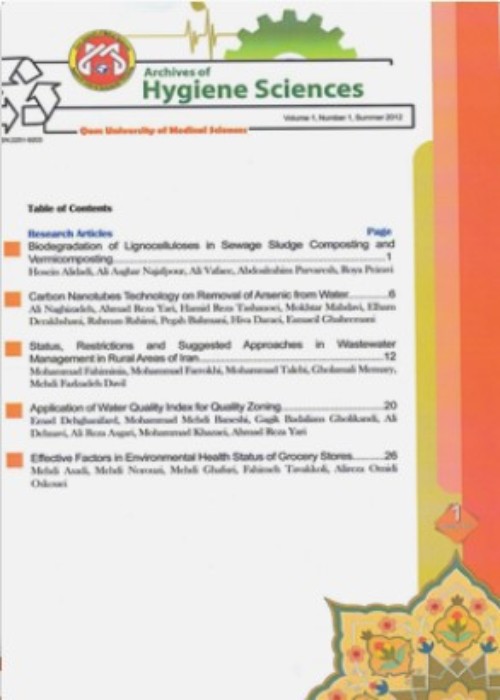Water Quality Trading Using Tradable Permit in Biodiversity of River and Assessment of Efficiency of Expense
Author(s):
Abstract:
Background and Aims
of the Study: Due to one-way flow of water in rivers Guilan, pollution trade theory and the system of Ratio-Trade (TRS) and Streeter - Phelps equation has been used. This system, with a view of the river self- purification and how the distribution and transport of pollutants, determined Ratio-Trade system (TRS) between the units and using this method offers optimal pattern of pollution trade between emissions units.Materials and Methods
Generally implementation of pollution trading plan was performed using transmission coefficient in the study area in 5 stages: zonation of the study area, qualitative changes in the dissolved oxygen (DO) and biochemical oxygen demand (BOD5) along the Langeroud river, defining the standard total output load for each region and the initial allocation between the emission sources, defining the transmission coefficients between the emission sources and different regions, trading ratio model (TRS)Results
Proving the implementation of pollution trading implementation in the urban and industrail units wastewaters in Langeroud and offering the buy and selling plan among these units, traditional livestock laughter unit will produce 30 m3/day, Langeroud urban sewage produces 15705 m3/day and the tanning unit produces 18 m3/day waste water daily.Conclusions
The cost of Emissions trading differs between countries because the Marginal Abatement Cost Curve (MAC) — the cost of eliminating an additional unit of pollution — differs by country. It is expected that trade can only function and contribute to the improvement of water quality when it is considered a cheaper option, i.e. cheaper than the violation of a permit limit.Keywords:
Language:
English
Published:
Archives of Hygiene Sciences, Volume:3 Issue: 3, Summer 2014
Page:
91
https://magiran.com/p1340466


